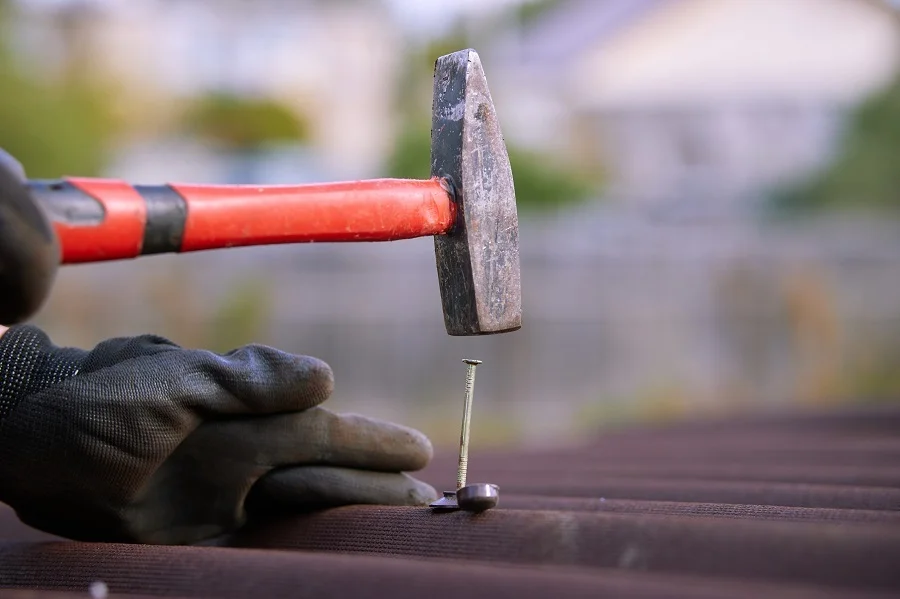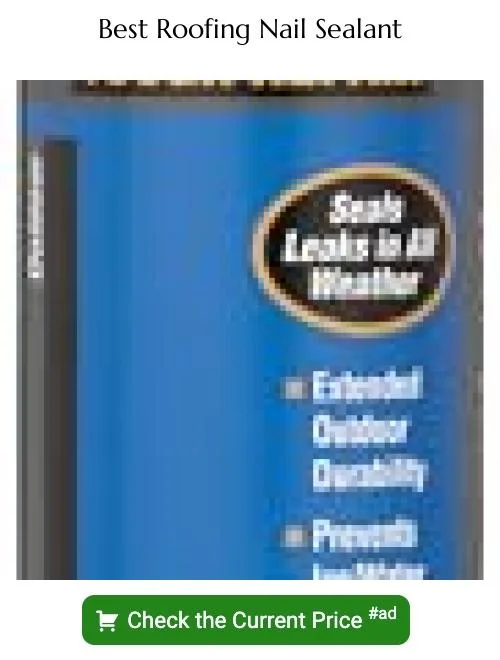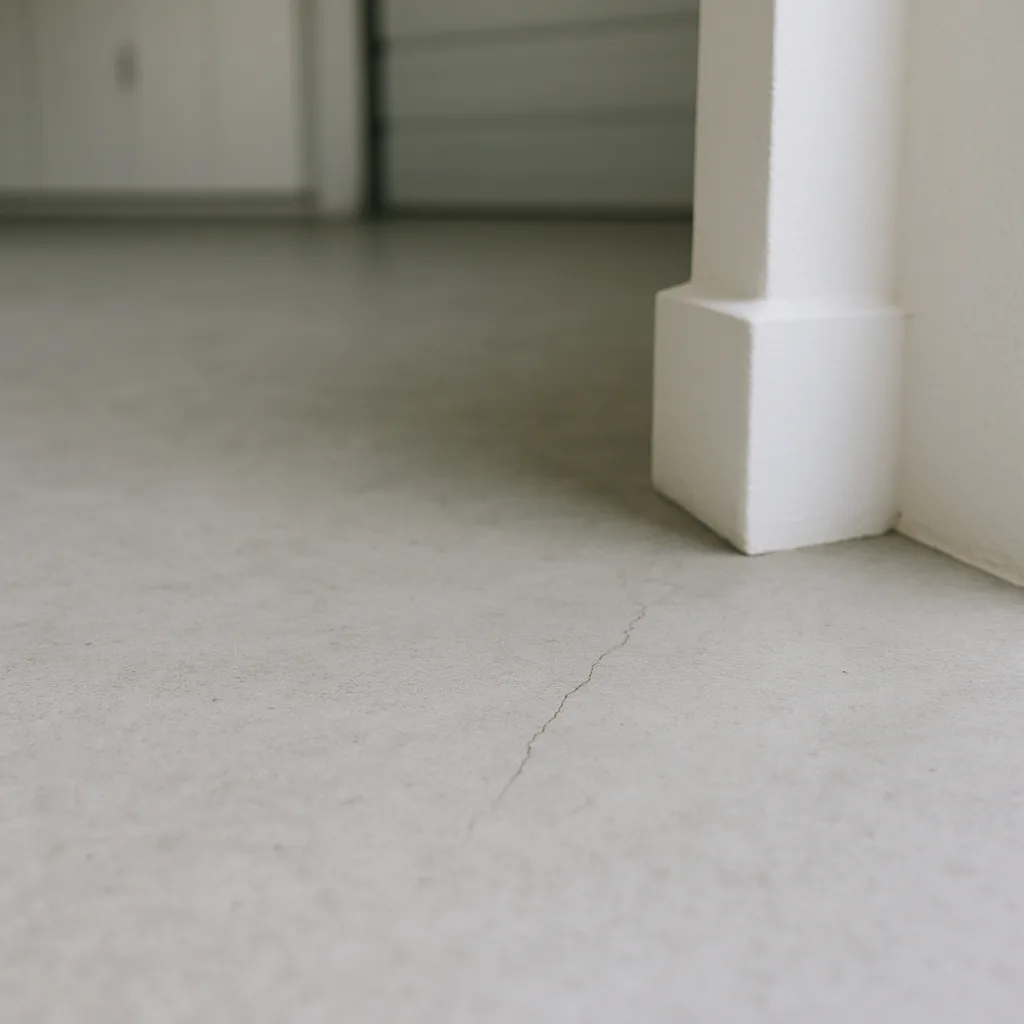Last updated on
Are you repairing or installing a new roof yourself? Here’s what you need to know about the exposed nails and how to cover them.
Although it is recommended that professional roofers carry out repairs and installations, there are also millions of keen DIY enthusiasts around the country.
Many of these individuals are adept at carpentry or have other skills that allow them to carry out renovations and repairs on their own property.
The DIY market in the states is expected to reach around $624 billion by 2025. Apps and software have also helped this area grow, and there are many videos and resources online for would-be DIY fans.
However, even if you are using floor plan software when planning a home, you can easily overlook some basic, but important areas.
Roofing is incredibly important to the planning of a home, but one area that can easily get overlooked is exposed nail heads and points. This is an area that many, if not the majority, of individuals probably never even think about.
What's Inside
Why is Roofing So Important?

Ok, so you are fully aware of the need to have a roof on a home. Yet, it is reasonably fair to say that most homeowners take this area for granted.
Roofs hold the entire structure of a home together. Without a roof, there would be no possibility of warmth, shelter, lighting, or indeed any electricity.
Maintaining a roof is also vital to extend its life of it. This is especially so when you consider how much a new roof will cost.
You can use a roofing calculator to understand just how much you might have to pay to replace your roof. Though the website lists the average price for an asphalt roof at somewhere between $6,000 to $9,000. Not a sum to be sneezed at.
Although, if you ignore damage to your roof and allow draughts and water to enter, you may find you literally are sneezing.
To know more about roof repairs and the importance of timely intervention, it’s recommended to consult with a professional roofing contractor. They can provide expert advice, assess the condition of your roof, and offer suitable repair solutions to ensure the longevity and safety of your home.
Even with a properly installed, and maintained roof though you may find there is one other concern; exposed roofing nails.
Should Roofing Nails Be Exposed?
When it comes to roofing experts and their employees the answer seems to be an emphatic no. Kyle Brochu of Peak Roofing believes that roofing nails should not be exposed, and should be sealed properly to prevent damage.
There are two different concerns with exposed nails though. There are roofing nails that are visible in the attic where they have penetrated the roofing layers and beams. Then there are exposed roofing nail heads on the actual roof, among the shingles.
Neither of these should be left exposed.
What Is the Problem with Roofing Nails Being Exposed?
If you consider the roofing nails that are exposed in the attic then the first concern is that they are dangerous.
An exposed nail end is sharp and can easily cause a head wound by someone not being aware they are there. It would be easy also to put a hand on one of these nails when reaching for support.
These nails will rust, and this makes them even more dangerous if they result in an injury.
When it comes to exposed nail heads on a roof, this is a whole different problem.
Should You Have Exposed Nail Heads on a Roof?
Sometimes exposed nail heads are the result of shoddy workmanship. All nail heads should be properly sealed and coated by a professional.
As you know, there are many DIY enthusiasts in the world, and some are not as skilled or knowledgeable as they might be. Some professional roofers are not quite as professional as they could be too.
Ideally, when a roof is installed their nail heads should not be visible. There may be some situations where it is unavoidable, but by and large, all nail heads should be covered.
What Happens When You Have Exposed Nail Heads on a Roof?
The problem with exposed nail heads is that they will rust. Now, over time it is possible that nail heads will become exposed as the roof ages and if you lose some shingles.
What happens when a nail rusts, is that it reduces in size. Specifically, the diameter of the nail becomes smaller. Doesn’t seem like such a problem does it?
Well, the issue is that the nail becomes smaller, but the hole it produced stays exactly the same. This means that there is room for water to gain access to your attic.
What Happens If You Leave These Nail Heads Exposed?
All nail heads should be sealed, and covered by shingles. Leaving them exposed to rust will result in water entering your attic and roof.
The result from this can be anything from mold and mildew to structural damage.
Multiple exposed nail heads can point to serious damage to your roof and may indicate that it is time to get a replacement installed, or at least repairs carried out.
When water enters the roof it will lead to poorer air quality, rot, and could even lead to ceilings collapsing.
At best, exposed nail heads just look plain unsightly.
How Can You Cover Exposed Roofing Nails?
If you are talking about exposed nail points in the attic then there are a couple of swift fixes for this.
One is to purchase a tool that will snip the ends of the nails off. This is not recommended by some roofing experts as it can lead to the nail being pulled as it is gripped and snipped.
Another popular way is to add corks to the exposed nail points. You can purchase corks to cover the roofing nails as in this video.
How Do You Cover Exposed Nail Heads on Roofs?
When your roof was installed, or if you have had repairs carried out, the roofer should have sealed the heads.
If you find you have exposed nail heads, and this could be from simply aging, then call a roofing company to assist.
Roofing cement can be used to seal the nail head and protect it from water and corrosion. Some roofers will also use two shingles rubbed together to add granules to the sealant. This will leave the exposed nail with a far more pleasing appearance.
Who Should Carry Out This Type of Work?
Sealing nail heads isn’t particularly difficult. You can purchase the roofing cement from a hardware store. As long as you have someone to steady the ladder, you could climb up to the roof and apply the sealant yourself.
There are plenty of small roofing-related jobs that can be carried out by DIY enthusiasts that are safe to do.
Nevertheless, roofing is a dangerous profession. It may pay off, in the long run, to have a professional come to check on the nail heads, and at the same time make an assessment on the health of your roof.
It is a good idea to have a roof checked once a year to make sure there are no problems with soffits, fascias, flashing, or your shingles. Your roof may last a lot longer for having this done.
The Takeaway
Although there are two types of exposed nails when it comes to roofing, it is the heads that are of most concern.
Exposed nail points in attics are easy to cover up, but the nail heads on your roof could lead to a multitude of problems.
As soon as you see exposed nail heads, either call in a roofer, or if you are competent, then get them sealed yourself.





